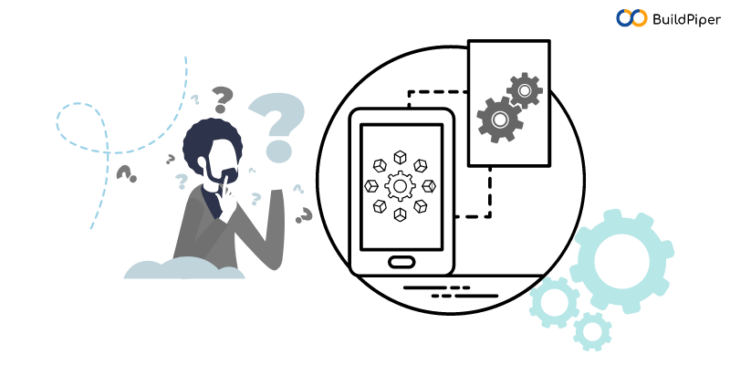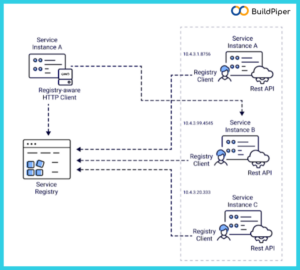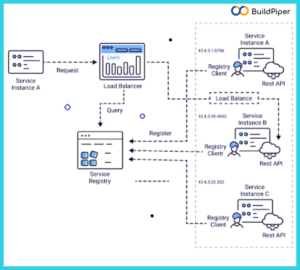
Service discovery is the technology to automatically detect various devices and offered services within a network. Here’s how the Service Discovery microservice mechanism helps in reducing configuration tasks for network administrators and helps teams to know where each service instance is located.
What is Service Discovery?
Service discovery is the process of automatically detecting services and devices on a computer network. It is how applications and microservices locate different components and devices on a network. Service discovery is commonly found in microservices architectures and containerization platforms. As it is difficult to detect network locations in such kinds of architectures, microservices especially use the service discovery mechanism.
Tools with Service Discovery Features: Some of the popular Service discovery tools which include service discovery features include HashiCorp’s Consul deployment and configuration tool, the Zabbix monitoring software and the Kubernetes containerization platform.
The Service Discovery Mechanism!
Using the Service discovery process helps to automatically detect various devices and offered services within a network. But how does the service discovery technology work? Here’s a brief explanation of how the Service Discovery mechanism helps in reducing configuration tasks for network administrators and helps teams to know where each service instance is located.
Service Discovery functions using a service discovery protocol. But before we read about this, we’ll talk about its different components. Service discovery is composed of three parts:
- A Service Provider: It creates service instances over a network.
- A Service Registry: It acts as a database that stores the location of all service instances.
- A Service Consumer: It retrieves the location of a service instance from the registry, and then communicates with that instance.
Service Discovery Protocol
A service discovery protocol is a network protocol that implements the service discovery technology and reduces manual configuration tasks on the part of both the administrators and the users.
The Two Methods for Service Discovery! Service discovery microservice uses two different discovery options depending on either the data center initiating the discovery or the service actively identifying itself to the data center. These two methods are known as Client-Side or Server-Side. Let’s read these in more detail!
Client-Side Service Discovery!
In the client-side service discovery, the client service is responsible for determining the network locations of service instances. The client accomplishes the task of finding the service locations by directly querying a service registry. This technique uses a direct approach for identifying network locations and allows clients to make intelligent decisions as per the requirements.

Server-Side Service Discovery!
Server‑side discovery allows each client to locate a specific service using a load balancer. In this approach, the load balancer will query the service registry and route requests to the targeted service instance. This technique simplifies the requests of the clients as there is no need to implement the discovery logic separately for different client services.
Server-Side Service Discovery
Major Difference: The primary difference between the two patterns is that in client-side discovery, the key responsibility of finding locations of available service instances is of the client and in server-side discovery, it is the server’s responsibility to locate the service instance.
Just like Service Discovery has two patterns, service instances or devices are also registered in one of the two ways that include,
– Self‑Registration Pattern
– Third-party Registration Pattern
These patterns allow other devices in the network to find the service. In the self‑registration pattern, a service will register itself with a service registry. This way it can easily get located. The third-party registration pattern uses a service registrar, a separate tool which provides an individual ID to each service, to register the service. The registrar records changes to an environment of instances, so whenever a new device or service is detected, the registrar adds either the service or device to the service registry.
Why is Service Discovery so Important?
Service Discovery is a key component of the Microservices architecture! While working on a microservices application, teams have to deal with service instances that have dynamic locations. The locations of these instances might change at runtime, based on factors such as autoscaling, service upgrades, and failures. Thus, it becomes difficult to locate these service instances. With Service discovery instances in dynamically assigned network locations within the microservices architecture.
It’s still not the END of all your Worries!
It’s not only the dynamic locations of the service instances that can be a problem while working in a Microservices architecture. The intricacies of managing, monitoring and deploying Microservices applications is another set of challenges that needs special attention and handling.
As choosing the right service discovery tool can fix location issues, a powerful platform can help in controlling Microservices. BuildPiper, a Microservices management platform can help your team handle the complex challenges of managing Microservices! Consult our tech experts to get the best consultation on any of your critical Microservices-related business problems! Talk to us NOW!




